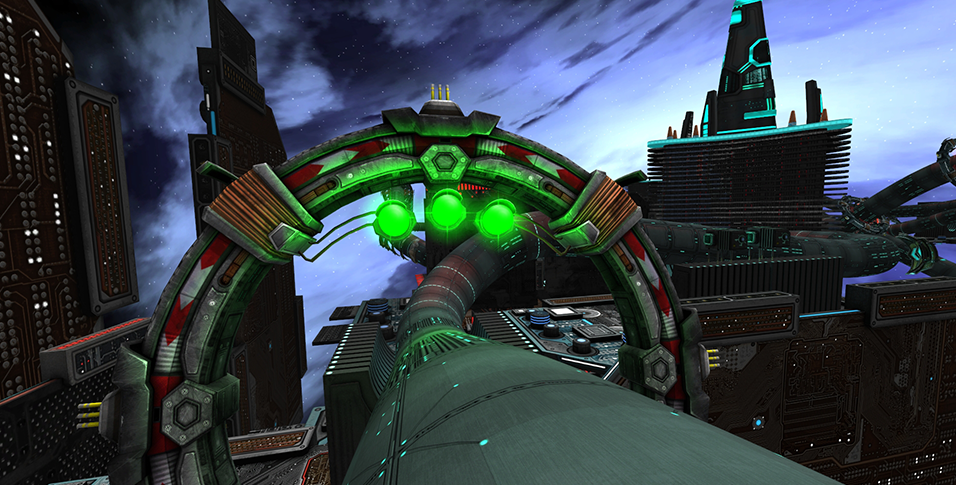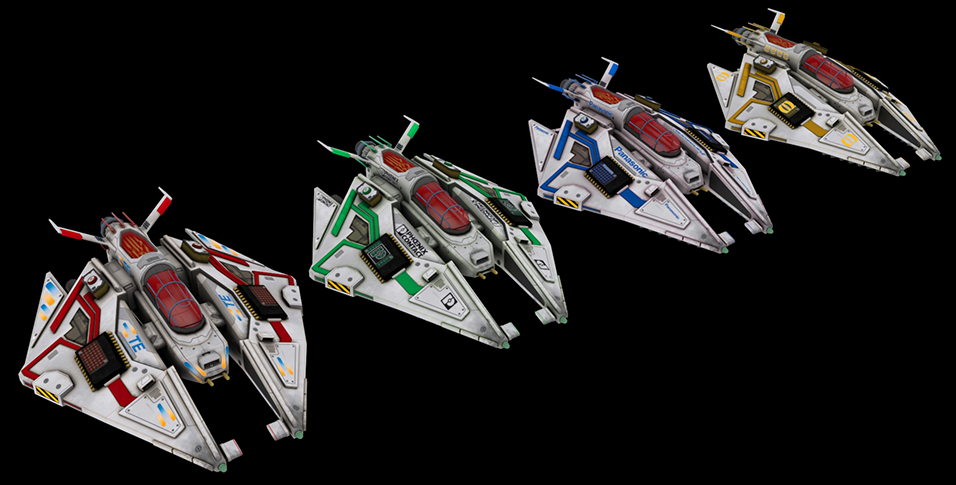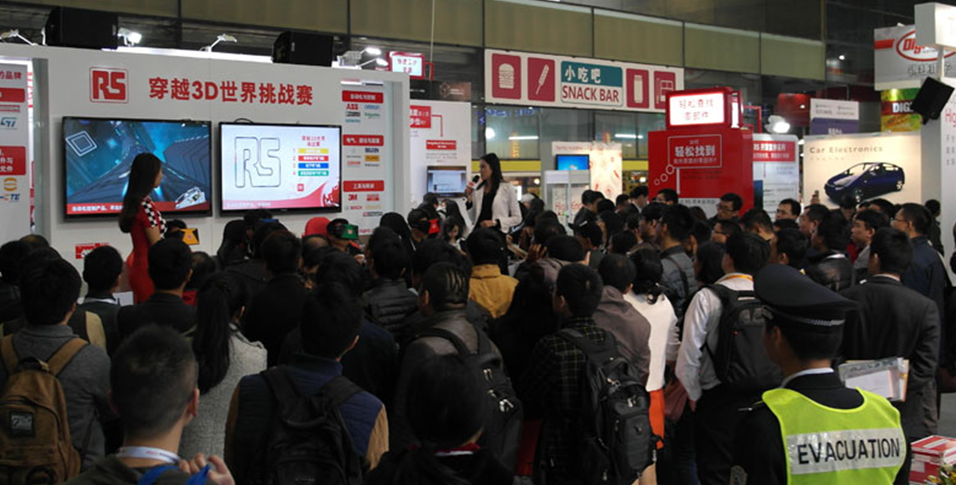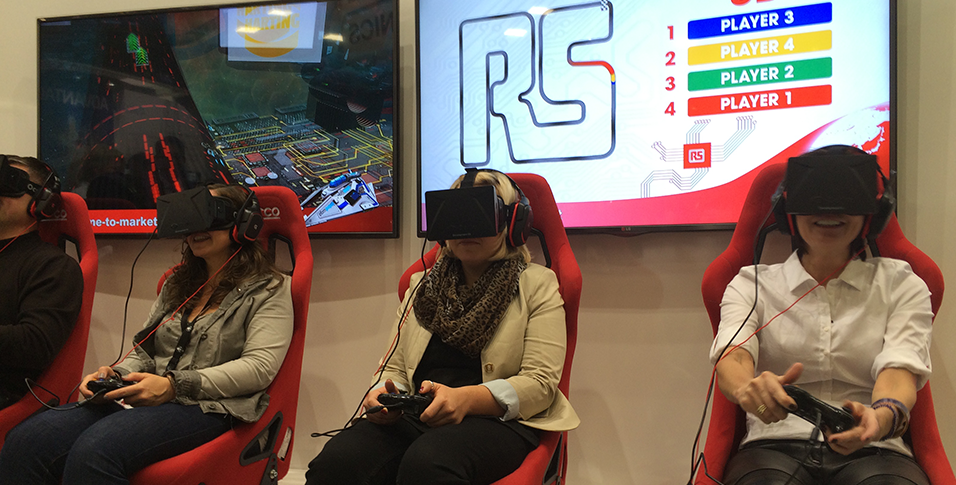Deploying unstable VR hardware development kit for an event on the other side of the globe where operation had to be straight-forward, carried out by non-native-English speakers at a high-profile company launch event where 100% up-time was essential.
An early example of using technology for wow factor impact over specific benefits beyond making the brand stand out in a new territory, where the technology wasn’t available, at a large-scale trade show to attract attendees to the booth. The experience had to encapsulate the purpose of the brand, with abstract allowances, whilst remaining comfortable to event attendees, 99% of whom would never have seen or tried VR before.
The early concept of racing along a tube, or a graphical representation of a collection of electrical wires, related to the brand, was initially tested for comfort in relation to the player being able to effectively spin the world 360° around their viewpoint as they steered along the course.
Once this was deemed acceptable, additional environmental elements were added, and removed until a comfortable medium was found. This resulted in the environment visibly lacking an up or down, or a horizon, so whilst the player was able to spin around, the reduced visual reference to their movement was less impactful on their senses, therefore reducing any sensation of potential nausea.
In early 2014, the only VR hardware available was the Oculus Rift DK1 (Development Kit), released to KickStarter backers in 2013 and more widely available to buy direct that year. These were limited in technical capability, with 3DoF headtracking, no motion input controllers and low-resolution screens compared to headsets available today. They were connected to (at the time) high-end gaming PCs and everything was pre-configured, tested and shipped to China for installation on the event booth.
Throughout development, regular user testing took place to ensure comfort was maintained for new players. This required putting first time users to VR through the experience to ensure that we weren’t using people who had begun to build up a tolerance to VR.
In 2014, and to a degree today, finding people who had not tried VR before was fairly easy to do. Once the experience was complete, soak testing took place to ensure the applications were stable and we could ensure continued up-time for the duration of each event day from start to finish.
The full build saw a futuristic, sci-fi environment stylised within the world of electronic components created to match the purpose and positioning of the brand. Floating billboards were inserted into the scene, designed to rotate through a series of graphical logos of specific brand and products available within the catalogue. Similarly, each race ship was adorned by key brand sponsor logos, visible to the audience during key camera shots.
Additional screens were added beyond those showing the mirrored output of each VR player, to provide an overhead view of the track, and an action cam style dynamic viewpoint, as found in motor racing, to cut to the player interactions on-track, as determined relevant by the algorithm. Finally, on the action cam screen, ticker-tape sales and marketing messages were displayed, highlighting key benefits and important information about the brand and company launch.
The entire experience was designed with on- and off-boarding in mind, kept to a total of 5 minutes length per player, to ensure a steady flow of attendees through the experience and reduced impatience of the audience queuing for their turn.
This was a high-risk project in regards to requiring a remote, international installation within a narrow window, during the event booth setup before the doors opened, working with a team of non-native English speaking installation engineers, using development kit hardware not designed for intensive use. Therefore the outcome of all the testing and pre-configuration ensured that installation, setup and daily operation was successful and friction-free.
The impact of the experience itself on the booth was overwhelming in regards to attracting attention and attendees of the show to the brand presence, vying to have a go on the VR game. Combined with trained booth assistants providing additional support and motivation to the current players, the booth ended up being so popular with attendees and lengthy queues to have a turn.





We’re always happy to talk to you about how immersive technologies can engage your employees and customers. If you have a learning objective in mind, or simply want to know more about emerging technologies like VR, AR, or AI, send us a message and we’ll get back to you as soon as we can.